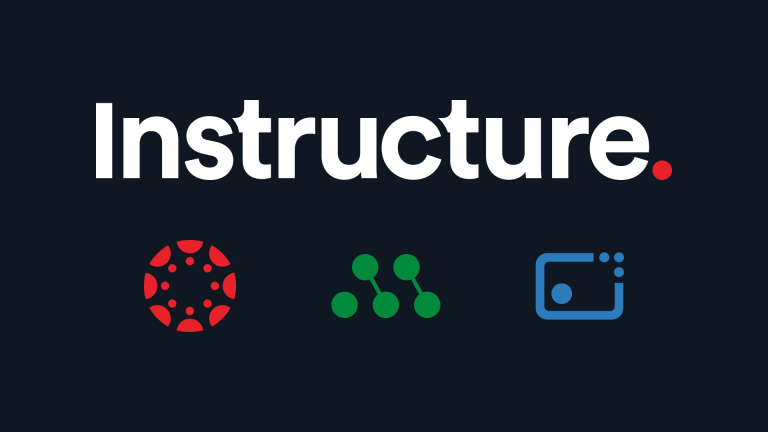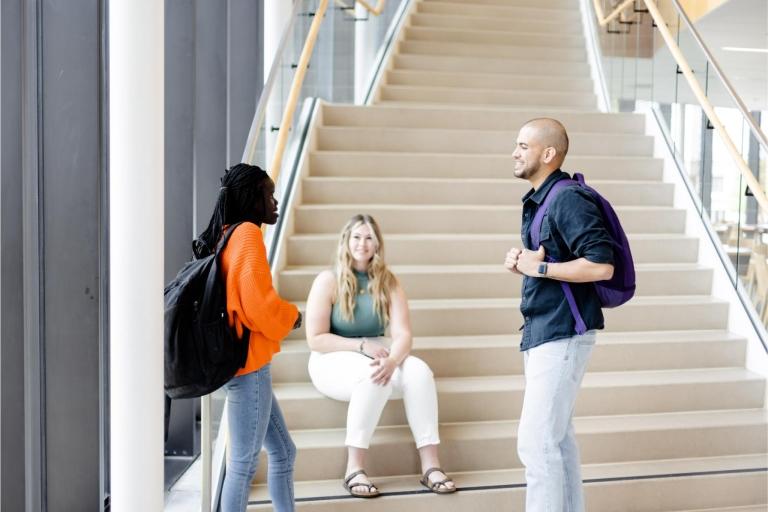It’s important for every student to reach their full potential. However, students need the support necessary to make academic achievement a possibility. To ensure every learner has the educational opportunities they need to succeed, schools and institutions are looking for ways to close equity gaps in education –offering inclusive and equitable learning experiences for every student.
Now, more than ever, academic environments are adopting pedagogy and strategies that center the student and differentiate their learning experiences. With modern learning methodologies such as competency-based education, human-centered design, and skills-based learning, academic environments are noticing positive effects.
Today’s students have more focused, flexible, accessible, and tailored learning options. Still, there is a need for improvement as we welcome evolving equitable learning practices. Thanks to modern learning management systems and digital tools, equity in education is easier than before. In this article, we’ll take a look at the importance of equity in education and how technology can facilitate that.
What is Equity in Education?
Equity in education promotes fairness and justice for every student. This is separate from equality, which refers to providing the same for all; equity embraces uniqueness, meeting students where they are. Diversity and inclusivity are embraced as equity pushes to reduce bias and open doors for every student.
However, equity in education is met with some challenges. Overcoming roadblocks, such as systematic barriers, is an ambitious effort but possible with collaboration and intention. This has motivated schools and institutions to take a deeper look at socioeconomic factors affecting their students. Factors such as gender, race, ethnicity, and geographical location impact the student's personal and academic lives. Learn more about the socioeconomic factors impacting today’s learners.
The Difference Between Equity and Equality
Equity and equality are often seen as substitutes. But these two hold different meanings and levels of importance depending on the situation at hand. Instead, equality and equity complement one another, joining together to fight important issues. For instance, equality is important for social issues pertaining to equal pay, regardless of gender or race. Equality is important for ensuring everyone has the opportunity to learn and access education.
Equity acknowledges diversity, guaranteeing the availability of resources to support distinct socioeconomic factors. For example, Arizona State University partnered with Instruture to bring diversity to global management and bridge gender gaps in the industry. Understanding that location can limit access to these resources, the 100 Million Learners initiative launched a worldwide effort to offer courses online. This global learning opportunity expands education around the globe in over 40 languages. Learn more about this global initiative.
The Importance of Equity in Education
Equity in education further shapes our communities and society as a whole. We diversify our schools and workforce by providing learning opportunities to students of all backgrounds and talents. This contributes to a diverse set of skills and abilities that benefit the whole academic ecosystem. But this starts in the classroom. Let’s take a look at how equity in education benefits students and educators.
When schools and institutions follow an equitable approach to learning, students benefit from tailored, personalized instruction. This gives them support and an overall sense of belonging. Whether students are learning in-person, remotely, or hybrid, it is important for them to feel comfortable and have a sense of well-being in their learning space. A recent study reports that psychological well-being has an 82% impact on student engagement. Even more so, having access to the learning resources they need also contributes to engagement and positive learning outcomes.
Identifying and Understanding Underserved Students
To address inequalities in education, we must first understand underserved students, their challenges, and what they need to succeed. Holistic approaches can help schools and institutions empathize with these populations and better assist them. Let’s take a look at prominent factors facing underserved students.
Socioeconomic: To better support these students, K-12 schools offer programs for reduced or free lunch to ensure no student goes hungry. Higher-ed institutions assist with financial aid, affordable meal plans, reduced housing costs, and cost-effective healthcare plans.
Race and Ethnicity: Minority groups may encounter systemic barriers such as discrimination and racial bias. Other differences, such as cultural and language barriers, can prove challenging in the academic environment. To offset these barriers, schools recognize the need to promote cultural curriculums, clubs, organizations, and an overall mission to be inclusive. Learn more about reducing bias in the classroom.
Geographical Location: Location can impact a student's physical access to the educational resources they need. Students living in education deserts lack proximity to public, broad-access colleges or universities. Thanks to advancing technology in education, students can now access education online and remotely.
Promoting Equity in the Classroom
Educators play a significant role in providing equitable learning experiences. By adopting differentiated and personalized learning approaches, educators ensure every student can learn – further promoting equity in the classroom. Here’s a glance at what promoting equity in the classroom can look like:
- Inclusive Classroom Decor
- Accessible Learning Materials
- Culturally Responsive Teaching
- Family and Community Partnership
- Differentiated Instruction
- Universal Design for Learning (UDL)
Equity in Education and Technology
“Access to reliable broadband and web-enabled devices is an essential first step to ensuring every student has equitable access to education. The next step is working to create equity in the classroom and adopting a platform that allows everyone to learn. Achieving true equity requires access to engaging content and high-quality, initial classroom instruction tied to a guaranteed and viable curriculum. To support educators in providing a learning experience that can reach every learner, we’ve partnered with states across the country to ensure every district has access to a consistent, cost-effective, and collaborative learning management system that can be customized to meet the unique needs of their students.” – The State of K-12 Teaching & Learning in California
Technology continues to evolve modern learning, breaking down traditional educational barriers. Learning management systems and other digital tools allow students to access academic resources when they need them. With Canvas, educators can tailor their courses, adding the tools and resources that would best support their students.
Edtech has facilitated a new era of academic relationships, allowing students to communicate and collaborate from anywhere. Online and remote learning spaces are now more diverse than ever. Despite socioeconomic status, race & ethnicity, and geographical location, any student can learn.
Although edtech has many benefits, there are still challenges with the digital divide and digital fluency. Understanding that today’s students need access to technology, many K-12 schools offer laptops, computer labs, or technology areas in the school media center. For higher education students, financial aid can assist with providing them with the technologies they need to learn. The campus library is another reliable resource.
Mobile learning further extends convenience and accessibility to students. With the Canvas mobile app, learners can track their learning and progress, quickly accessing course resources in the palm of their hands.
Supporting Equity With Canvas
Equitable learning experiences are essential to the future of learning. Learn how you can support equity and remove roadblocks in education with Canvas LMS and its supporting digital tools.
Related Content
 inst-3step.jpg
inst-3step.jpgBlogs
 inst-default
inst-defaultBlogs
 ai_blog_1.jpg
ai_blog_1.jpgBlogs

